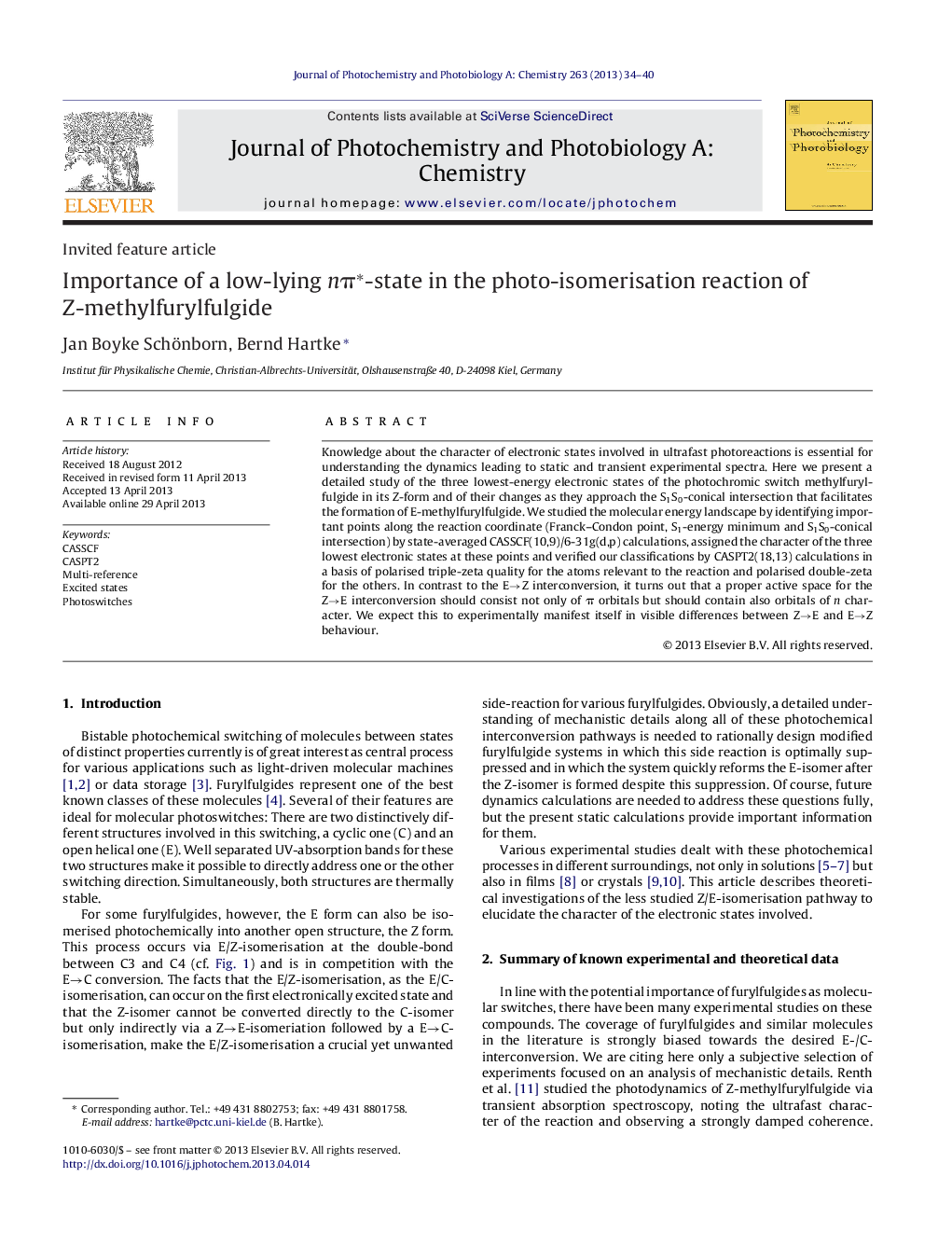| کد مقاله | کد نشریه | سال انتشار | مقاله انگلیسی | نسخه تمام متن |
|---|---|---|---|---|
| 27026 | 43995 | 2013 | 7 صفحه PDF | دانلود رایگان |

• nπ*-Character is present in S1 and S2 at the Z-Franck–Condon point.
• Excited state character quickly changes on the path Z→E.
• There is no nπ*-character in S1 close to the conical intersection.
• These findings significantly differ from older findings for E→Z and E↔C.
Knowledge about the character of electronic states involved in ultrafast photoreactions is essential for understanding the dynamics leading to static and transient experimental spectra. Here we present a detailed study of the three lowest-energy electronic states of the photochromic switch methylfurylfulgide in its Z-form and of their changes as they approach the S1S0-conical intersection that facilitates the formation of E-methylfurylfulgide. We studied the molecular energy landscape by identifying important points along the reaction coordinate (Franck–Condon point, S1-energy minimum and S1S0-conical intersection) by state-averaged CASSCF(10,9)/6-31g(d,p) calculations, assigned the character of the three lowest electronic states at these points and verified our classifications by CASPT2(18,13) calculations in a basis of polarised triple-zeta quality for the atoms relevant to the reaction and polarised double-zeta for the others. In contrast to the E→Z interconversion, it turns out that a proper active space for the Z→E interconversion should consist not only of π orbitals but should contain also orbitals of n character. We expect this to experimentally manifest itself in visible differences between Z→E and E→Z behaviour.
Journal: Journal of Photochemistry and Photobiology A: Chemistry - Volume 263, 1 July 2013, Pages 34–40